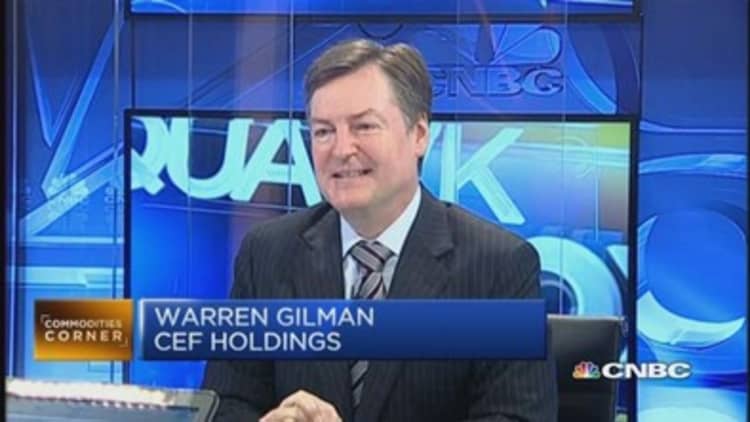
Iron ore's price plunge is likely to start claiming corporate casualties among the industry's smaller players, Goldman Sachs said.
"Tier-one producers have no alternative but to reduce unit costs and to exploit their asset base more efficiently; their production volumes are not at risk from a lower iron ore price," Goldman said in a note last week. "However, the rest of the industry is now facing an existential challenge."
It expects the tier-one producers -- Vale, Rio Tinto and BHP Billiton assets in Australia and Brazil -- will continue to expand.
Read More Citi analysts call the 'end of the Iron Age'
"We lump every other producer into the tier-two category," Goldman said, estimating up to 50 percent of the tier-two production capacity is at risk through 2019. Australia's Atlas Iron has already announced it suspended all mining operations, it noted.
Price slump
Iron-ore prices are down more than 50 percent over the past year, with the April contract Nymex iron ore 62 percent FE CRF China trading at $48.26 a tonne Friday, compared with around $108.50 12 months ago.
Goldman cut its 2015-2018 iron ore forecasts by 18-33 percent to $52, $44, $40 and $40 a tonne respectively and it lowered its long-term forecast by 25 percent to $45.
Chinese demand is seen as key for the market and worse-than-expected import figures for the world's biggest economy did little to boost sentiment earlier this month. Iron ore is used in steel production.
Read More Mark Mobius' top conviction: Buy commodities
"Chinese steel consumption has already overshot and it will contract until it reaches a sustainable rate," Goldman said, noting the demand peak came as iron-ore mining capacity is still expanding.
Mine closures
Goldman isn't alone in expecting the industry to face significant pressure.
With iron ore prices likely to continue falling, "those people that can survive in that environment will make some money. I wouldn't say they'll necessarily flourish, but they'll make some money. Those that can't compete are in real trouble and we're going to continue to see mine closures," Warren Gilman, chairman and CEO of resources investor CEF Holdings, told CNBC last week.
Gilman doesn't expect much M&A interest in lower tier players as the market is bifurcated between the players with low-cost bases -- Rio Tinto, Vale, BHP Billiton and select other projects globally -- and the rest of the industry, which has significantly higher costs, suggesting few synergies.
Credit watch
Rating agencies are also concerned about the impact of iron ore's plunge.
Last week, Standard & Poor's placed several industry players on credit watch negative, including Anglo American, BHP Billiton, CAP, Rio Tinto, Fortescue, Vale, Exxaro Resources and Eurasian Resources.
"We forecast an only modest improvement in prices through 2017, as it will take time for high-cost producers to cut supply. However, the extent and pace of closures is unclear, and a recovery in iron ore prices will likely also require demand growth to fully absorb the material new supply this year," S&P said in a statement last week.
S&P cut its 2015-17 iron ore price forecasts by 21-31 percent to $45, $50 and $55 a tonne respectively.
Earnings compression
Moody's, too, expressed concern about producers as the market is "drowning in oversupply with more on the way," but it said its changes in price assumptions won't immediately result in rating action, although the potential for a step will increase.
"Higher volumes, lower energy prices, and lower costs in local currency terms will incrementally improve cash costs for producers, but at current iron ore price levels, we believe all producers will face severe earnings compression once costs are adjusted for royalties and sustaining capital," Moody's said. "At current spot iron ore prices in the mid-$40/MT range, BHP Billiton, Rio Tinto and Vale are likely approaching break even, while others, such as Fortescue, could turn negative."
The supply-side has been slow to respond to iron ore's price plunge, Moody's said, noting the Australian government estimates its country's mines will increase 2015 exports by around 10 percent after a 23 percent rise last year.
Other analysts are also bearish on the metal's outlook, with Citigroup cutting its 2015-16 forecasts by 23-37 percent to average $45 and $40 a tonne respectively.
--Matt Clinch contributed to this article
—By CNBC.Com's Leslie Shaffer; Follow her on Twitter @LeslieShaffer1


